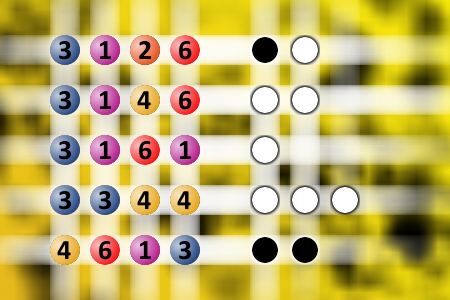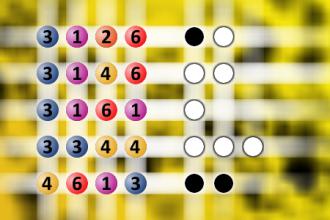Which is a winning combination of digits?
The computer chose a secret code (sequence of 4 digits from 1 to 6). Your goal is to find that code. Black circles indicate the number of hits on the right spot. White circles indicate the number of hits on the wrong spot.Correct answers: 78
The first user who solved this task is Djordje Timotijevic.
#brainteasers #mastermind

The Gift
On the first day of school, the children brought gifts for their teacher. The florist's son brought the teacher a bouquet of flowers. The candy-store owner's daughter gave the teacher a pretty box of candy. Then the liquor-store owner's son brought up a big, heavy box. The teacher lifted it up and noticed that it was leaking a little bit. She touched a drop of the liquid with her finger and tasted it.
"Is it wine?" she guessed.
"No," the boy replied. She tasted another drop and asked, " Champagne ?
"No," said the little boy... "It's a puppy!"
"Is it wine?" she guessed.
"No," the boy replied. She tasted another drop and asked, " Champagne ?
"No," said the little boy... "It's a puppy!"

